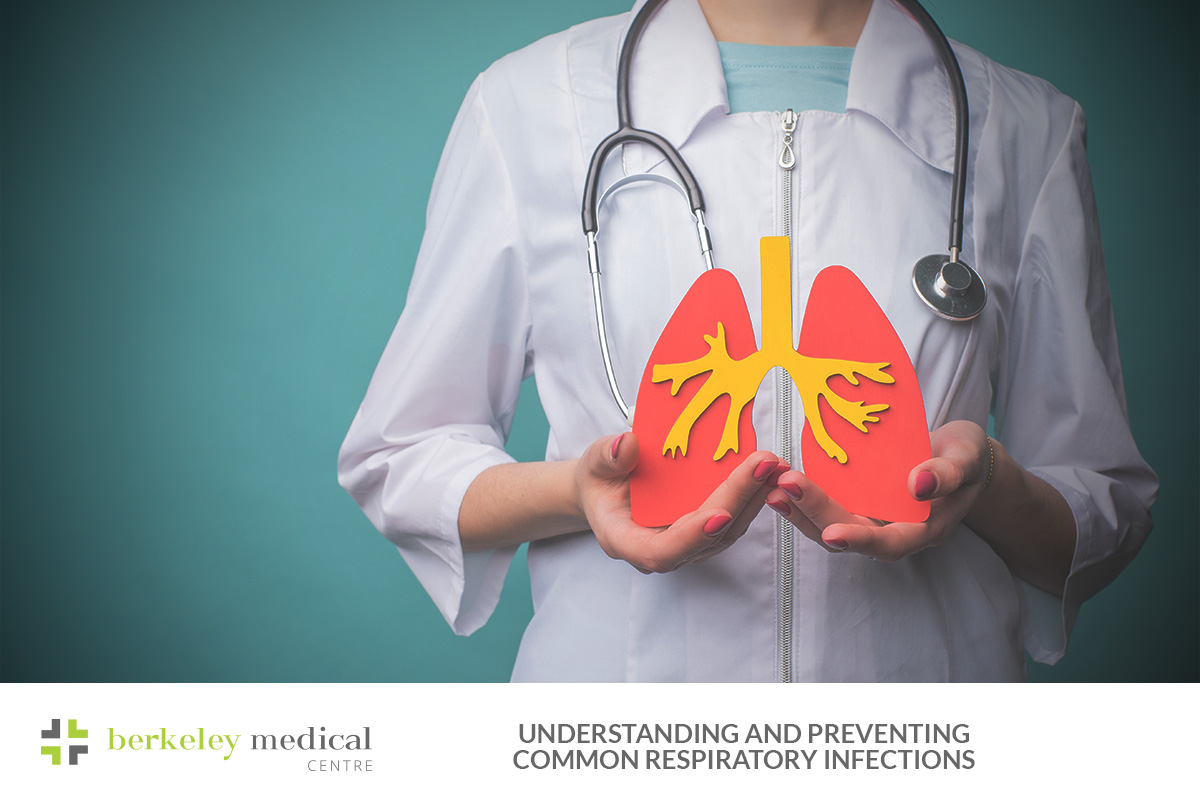Respiratory infections are some of the most common illnesses people experience, particularly during the colder months. From mild conditions like the common cold to more serious infections such as the flu, understanding how these illnesses spread and how to protect yourself is essential in maintaining good health.
In this article, we will explore the different types of respiratory infections, their symptoms, how they spread, and most importantly, how you can prevent them.
What Are Respiratory Infections?
Respiratory infections are illnesses that affect the respiratory system, which includes the airways, lungs, and breathing passages. These infections are caused primarily by viruses, and sometimes bacteria. They range from mild conditions, such as the common cold, to more serious illnesses that can cause significant discomfort or complications.
Common respiratory infections include:
- The Common Cold: Caused by a variety of viruses, particularly rhinoviruses. While usually mild, the cold can cause symptoms like a sore throat, runny nose, and sneezing.
- Influenza (The Flu): This is a more severe viral infection that often brings symptoms such as fever, fatigue, body aches, and cough. It can lead to complications, especially in older adults or individuals with pre-existing health conditions.
- Bronchitis: An infection that causes inflammation in the bronchial tubes, leading to coughing, mucus production, and chest discomfort. Bronchitis may follow a cold or flu, but it is often more persistent.
- Pneumonia: A serious lung infection that can be caused by viruses or bacteria. It results in symptoms such as severe cough, chest pain, fever, and difficulty breathing.
Symptoms of Respiratory Infections
The symptoms of respiratory infections can vary depending on the type of illness, but common signs include:
- Coughing: This can range from a mild, dry cough to a productive cough with mucus.
- Sore Throat: Often a sign of viral infection, a sore throat can be accompanied by difficulty swallowing or speaking.
- Runny or Blocked Nose: Common in upper respiratory infections, leading to congestion or sneezing.
- Fever: A higher-than-normal body temperature is a sign that your body is fighting off an infection.
- Fatigue: Feeling unusually tired or lacking energy, particularly in the case of the flu or more serious infections.
- Muscle Aches: This is especially common with the flu, where body aches and joint pain can be widespread.
- Chest Tightness or Pain: This can be a sign of lower respiratory tract infections like bronchitis or pneumonia.
While these symptoms can be mild and manageable at home, they can sometimes become severe and require medical attention, especially for high-risk individuals.
How Respiratory Infections Spread
Respiratory infections are highly contagious and can spread quickly from person to person. The most common ways they spread include:
- Airborne Droplets: When an infected person coughs, sneezes, or talks, tiny droplets containing the virus or bacteria are released into the air. These droplets can be inhaled by others nearby, leading to infection.
- Direct Contact: Touching an infected person, such as through handshakes or close contact, can transfer the virus. If you then touch your face, particularly your eyes, nose, or mouth, the virus can enter your body.
- Contaminated Surfaces: Viruses can survive on surfaces for hours or even days. If you touch contaminated surfaces, such as doorknobs, mobile phones, or countertops, and then touch your face, you may become infected.
Who is at Higher Risk?
While anyone can catch a respiratory infection, certain individuals are more susceptible to severe symptoms or complications. Those at higher risk include:
- Elderly individuals (over 65 years)
- Young children and infants
- Pregnant women
- People with chronic health conditions, such as asthma, heart disease, or diabetes
- Individuals with weakened immune systems, such as those undergoing cancer treatment or living with autoimmune disorders
For these individuals, respiratory infections can lead to serious complications, including pneumonia, bronchitis, or hospitalisation, making prevention a top priority.
Prevention: How to Protect Yourself
While respiratory infections are common, there are several ways you can reduce your risk of catching them. Simple lifestyle adjustments and hygiene practices can go a long way in protecting yourself and those around you.
Get Vaccinated
Annual influenza vaccinations are one of the most effective ways to protect yourself from the flu and reduce the severity of symptoms. Flu vaccines are updated each year to account for new virus strains, so it is essential to get vaccinated regularly. Vaccination is particularly important for those in high-risk groups, but everyone can benefit from it.
Wash Your Hands Frequently
Good hand hygiene is crucial in preventing the spread of respiratory infections. Wash your hands regularly with soap and water for at least 20 seconds, particularly after coughing, sneezing, or being in public spaces. If soap and water are not available, use an alcohol-based hand sanitiser.
Avoid Touching Your Face
Viruses often enter the body through the eyes, nose, or mouth. By avoiding touching your face, you reduce the likelihood of introducing the virus into your system after touching contaminated surfaces.
Maintain Physical Distance
Where possible, keep a safe distance from people who are coughing, sneezing, or showing symptoms of illness. Physical distancing can help reduce your risk of inhaling airborne droplets that may carry the virus.
Cover Your Mouth and Nose When Coughing or Sneezing
When you cough or sneeze, cover your mouth and nose with a tissue or your elbow. Dispose of tissues immediately and wash your hands to prevent spreading germs to others.
Stay Home if you are Sick
If you are feeling unwell, it is important to stay home and rest. Avoid going to work, school, or public places until you have fully recovered. This will help prevent the spread of the infection to others.
Boost Your Immune System
A strong immune system can help your body fight off infections more effectively. Ensure you are eating a healthy, balanced diet rich in fruits, vegetables, and whole grains. Regular exercise, adequate sleep, and staying hydrated also contribute to overall immune health.
What to Do If You Develop Symptoms
If you start to experience symptoms of a respiratory infection, it is essential to take steps to manage them and prevent the illness from worsening. Here are a few tips:
- Rest: Your body needs time to recover, so make sure you get plenty of rest.
- Stay Hydrated: Drink plenty of water, herbal teas, or clear broths to stay hydrated, particularly if you have a fever.
- Use Over-the-Counter Medications: To ease symptoms like pain or fever, consider taking over-the-counter medications, but always follow the recommended dosages.
- Consult a GP: If your symptoms worsen or if you are part of a high-risk group, it is important to consult a healthcare professional for further advice or treatment.
Conclusion
Respiratory infections are a part of life, but with the right precautions, you can significantly reduce your risk of falling ill. From getting vaccinated to practising good hygiene and maintaining a healthy lifestyle, these simple steps can make a big difference in keeping you and your family healthy.
If you need support or advice on managing respiratory infections, Berkeley Medical Center is here to help. Our experienced GPs provide tailored care, whether you need a diagnosis, treatment, or preventative measures like vaccinations. Stay on top of your health by visiting us for regular check-ups and expert advice.







